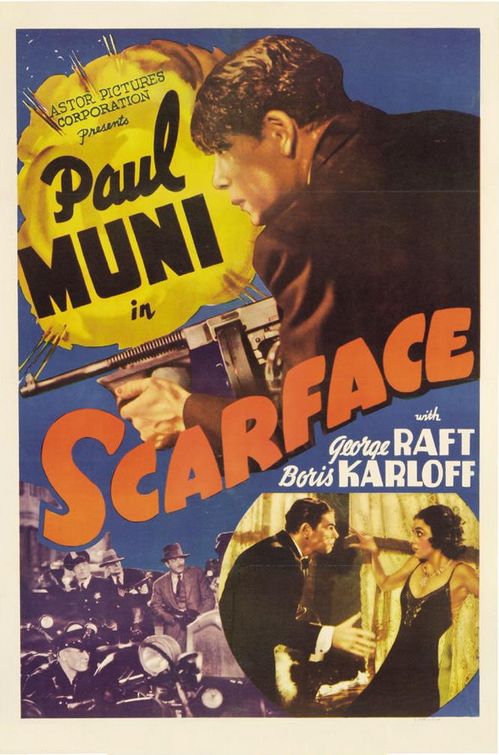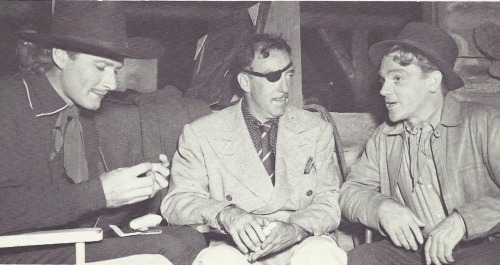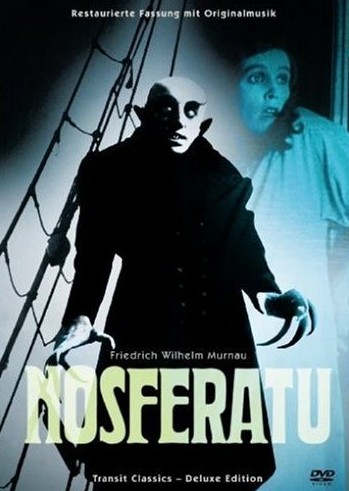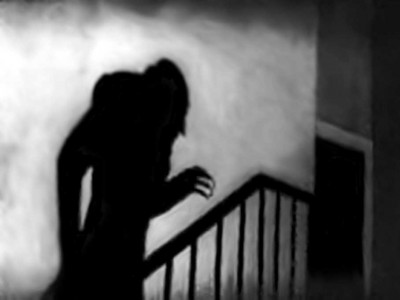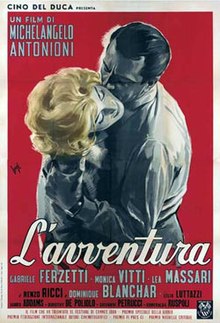Dir: Michael Powell & Emeric Pressburger
Starring: David Niven, Roger Livesey, Raymond Massey, Kim Hunter, Marius Goring
Country: UK
Colour and B&W
It is with no
little amount of weeping and gnashing of teeth that I have finally arrived at
my decision for a film of the 1940s. Such a wealth cinematic delights emerged
from this decade that I’ve ended up comparing notes with the only other person
whose opinion I value on the matter.
It is of interest to me that when we
tallied up our choices for films of the decade, the only era we differed on was
the 40s, so vast is the choice. So I’ve had to go it alone. But, just so you
know, it wasn’t easy and I feel I’d be doing you a disservice if I didn’t list
just a few of the films that could’ve gotten the vote. They are, in no particular order: The Maltese Falcon, The Treasure of the Sierra Madre, Citizen Kane,
Casablanca, Brighton Rock, Notorious, The Third Man, The Bicycle Thieves.
I’ll stop there, but you get the picture. It’s probably my favourite movie
decade. I don’t have enough room to explain why.
“A Matter of
Life and Death” is nothing, if not utterly unique. It was created (I use the
word advisedly) by the twin talents of Michael Powell and Emeric Pressburger
(whose Grandsons Andrew and Kevin, are now leading lights in contemporary
British cinema; Andrew producing, amongst other films Slumdog Millionaire, and Kevin the director of both fiction – The Last King of Scotland - and the
recent documentary Marley).
Under their
production company, The Archers, Powell and Pressburger are responsible for at
least six bone fide classics of cinema (and several others also worth a look) including
A Matter of Life and Death, made in a
particularly fertile creative period between 1943 and 1948.
These are: The Life and Death of Colonel Blimp, A Cantebury Tale, I know Where I’m Going, Black Narcissus and The Red Shoes (to
which, along with Powell’s solo effort from 1960, Peeping Tom, Martin Scorsese attributes his love of the colour red,
on screen). It is a truly monumental achievement, which you’ll only truly understand
once you’ve seen as many good, bad and ugly films as I have.
A Matter of Life and Death stands out from them all for me
though, because it first introduced me to magical realism, a genre where magical elements are interwoven with the real world.
This is distinct from fantasy because
of the seemingly ordinary and straightforward way in which the elements are
blended. Suspension of disbelief and an absence of cynicism on the part of the
viewer are an essential requirement if you are to truly enjoy the experience.
 |
| Opening sequence: "This is the universe...big isn't it". |
From the
opening shots of the cosmos with it’s wonderfully deadpan voice over: “This is
the universe…big isn’t it”, It wears its intelligence and irony lightly, and is
shot through with an English eccentricity (curious since Pressburger was a
Hungarian émigré) that, when combined with it’s fantastical elements, makes it
unlike any other film I’ve ever seen.
The story
follows a pilot who, returning from a raid over Germany in an all but destroyed
Lancaster Bomber makes radio contact with an American radio operator. Hers is
to be the last voice he hears in the land of the living because the aircraft is
kaput and there are no parachutes.
The girl becomes terribly upset, while he – all stiff upper lip – puts on a
brave face as he prepare to shuffle off this mortal coil, except…
 |
| David Niven, "done for", apparently. |
…he doesn’t
die, despite bailing out without a parachute.
What follows
is a flight of fancy, so remarkable and perfect in its realisation, yet so
truthful in the emotions it conveys and the philosophical worldview it espouses,
that only the most hard-bitten cynic would fail to be moved. It is, in short, a
delight.
 |
| Roger Livesey at the trial in Heaven |
 |
| Marius Goring as Conductor 71 - "One is starved of colour up there". |
We discover
that the rest of the pilot’s crew are awaiting him in heaven (shot in luminous
black and white, contrasting vividly with the real world’s sumptuous technicolour)
where the angels are getting themselves all in a tizzy because one of their
souls is missing. There’s been a cock up in heaven and the books aren’t
balanced.
The angel in charge of the safe transport of the pilot’s soul goes by
the name of Conductor 71 (a charming turn by Powell and Pressburger favourite
Marius Goring), is duly despatched to earth to rectify the error. But there’s a
hitch. In a twist of fate, our hero and the radio operator have met and fallen
immediately and completely in love.
How it plays
out after this has to be seen to be
believed, but it is without doubt one of the oddest, most beautiful and most
sophisticated cinematic visions ever committed to celluloid, and my life is
richer for having seen it (about thirty times at the time of counting).
 |
| Roger Liveey as the eponymous Colonel in,"The Life and Death of Colonel Blimp". |
David Niven
is the unshakeably firm of purpose, death-dodging pilot. And he is driven on by
that most old-fashioned, yet noble of English qualities – a sense of fair play
– to challenge the fate that has been ordained for him. There is a youthful Kim
Hunter as the girl he loves and Roger Livesey (another Powell & Pressburger regular), as the noble
doctor who fights through life and death (literally) to keep them together.
So what is
it finally about this unique cinematic achievement that so overwhelms me?
Certainly its directorial vision is so acute, refined and innovative that it
marks Powell out to be one of the true greats of British cinema, to be ranked
alongside David Lean and Carol Reed, to name but two. The film is so ahead of
its time that it is almost inconceivable that it was made just one year after
WW2 ended.
Perhaps it
is the fact that its oddness has exempted it from topping the polls of greatest
British films of all time (that honour goes to The Third Man a dark, cynical film noir set in post-war Vienna, it’s a moot point, but there is much to
recommend it); there seems to be something resolutely non-mainstream about it,
despite the presence of top drawer talent like Niven, and this certainly
appeals to my contrarian nature. But it goes deeper than that.
 |
| The film was titled, "Stairway to Heaven", for its American release |
I said at
the very beginning that this was to be a very personal list, and to truly fall
in love with cinema you have to get personal about it. For it to really get
under your skin you need to completely embrace the films that ignite your
passion and damn the opinions of others. So here’s why I love A Matter of Life and Death.
It touches
me deeply in a way that I don’t fully understand. There is something about it
that makes me feel that it was made for me and me alone. It reminds me that,
despite my perennially grumpy classroom façade, I am in fact a soppy old
romantic at heart and sometimes I want to be reminded of that.
 |
| David Niven and Kim Hunter. Brought together by a clerical error in Heaven. |
Because life can
be hard and tough and cruel at times; it will make you cynical and bitter and
jaded if you let it. So sometimes, just occasionally, it’s nice to hear the
message contained in this film - albeit told in its own curious and enchanting
way; that love can conquer all. It’s enough to make a grown man cry.
Watch it and
fall in love.





